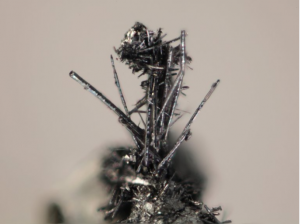 Pengfei Xue (CEE) and his modeling work through the Great Lakes Research Center, which led to a more comprehensive climate and hydrodynamics model for the whole Great Lakes region, has been featured in several science media outlets including Science Daily, Phys.org, Terra Daily and Supercomputing Online News. The story was shared numerous times by collaborators and the science community on Twitter.
Pengfei Xue (CEE) and his modeling work through the Great Lakes Research Center, which led to a more comprehensive climate and hydrodynamics model for the whole Great Lakes region, has been featured in several science media outlets including Science Daily, Phys.org, Terra Daily and Supercomputing Online News. The story was shared numerous times by collaborators and the science community on Twitter.
Weather the Storm: Improving Great Lakes Modeling
The collaborative work brought together researchers from Michigan Technological University, Loyola Marymount University, LimnoTech and the National Oceanic and Atmospheric Administration’s Great Lakes Environmental Research Laboratory. Pengfei Xue, an assistant professor of civil and environmental engineering at Michigan Tech, led the study through his work at the Great Lakes Research Center on campus.
One of the important concepts in climate change, in addition to knowing the warming trend, is understanding that extreme events become more severe. That is both a challenge and an important focus in regional climate modeling. —Pengfei Xue



 “Minerals have a natural wow factor, and while we use many of them daily without thinking twice, some specimens are truly art,” Jaszczak says, adding that minerals like the gems tanzanite (a blue/purple variety of zoisite) and tsavorite (a green variety of grossular garnet), which come from the same mines as merelaniite, can be more eye-catching. But it doesn’t negate the value of less showy minerals.
“Minerals have a natural wow factor, and while we use many of them daily without thinking twice, some specimens are truly art,” Jaszczak says, adding that minerals like the gems tanzanite (a blue/purple variety of zoisite) and tsavorite (a green variety of grossular garnet), which come from the same mines as merelaniite, can be more eye-catching. But it doesn’t negate the value of less showy minerals.